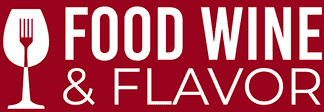Wine tasting is a fascinating experience that can be enjoyed by anyone, from casual drinkers to connoisseurs. It is a great way to explore the different flavors, aromas, and textures of wine and to appreciate the art and science of winemaking. In this blog post, we will outline the basic steps to tasting wine.
Step 1: Sight (Look)
The first step in wine tasting is to examine the appearance of the wine. Hold the glass up against a white background (paper, menu or napkin) and look at the color and clarity of the wine. The color can provide clues about the grape variety used and the age of the wine.
For example, white wines can range from pale straw to deep gold, while red wines can range from light ruby to dark purple. The clarity can indicate the quality of the wine, as well as the presence of sediment.
If you are sampling sparkling wine, look at the bubbles. Are they large or small? Do they move quickly or more slowly?
Step 2: Smell
The second step in wine tasting is to smell the wine. Now most people will go to Swirl, but just hold with me for a moment. Hold the wine glass just below your chin, near your clavicle. Do you smell anything?
Now, move the wine glass to the edge of your chin. Sniff again. Detect much yet? If yes, you are dealing with an aromatic wine.
Lastly, move the wine glass to your upper lip, just under your nose. Smell again. Nothing? It’s possible.
By Smelling before we Swirl, we can detect more of the natural aspects of the wine. Once we swirl, pretty much any wine will release its aromas.
Step 3: Swirl
Swirl the wine in the glass to release its aromas, then bring the glass up to your nose and take a few quick sniffs. Try to identify the different aromas present in the wine, such as fruit, flowers, spices, or oak. The aromas can provide clues about the grape variety used, the region where the wine was produced, and the winemaking techniques used.
Contrary to popular belief, taste and aroma are not the same thing in wine tasting. Taste refers to the basic sensations detected by the taste buds, such as sweetness, sourness, saltiness, and bitterness, while aroma refers to the complex and varied scents that are detected by the olfactory system. In fact, it is estimated that up to 80% to 90% of what we perceive as taste in wine is actually due to our sense of smell.
When we taste wine, the aromas are released through the back of the mouth and into the nasal cavity, where they combine with the sense of taste to create the overall flavor experience. This is why wine tasters often swirl the wine in the glass before tasting it, as it helps to release the aromas and enhance the flavor.
Therefore, while taste is certainly an important aspect of wine tasting, it is the combination of taste and aroma that creates the complex and nuanced flavors that we associate with wine. By paying attention to both the taste and aroma of wine, we can gain a deeper appreciation for the art and science of winemaking, and enhance our enjoyment of this beloved beverage.
Step 4: Sip (Taste)
The third step in wine tasting is to taste the wine. Take a larger sip than you might take socially and let it sit on your tongue for a few seconds. Try to identify the different flavors present in the wine, such as fruit, spice, or oak. Pay attention to the texture of the wine, such as its body, acidity, and tannins. The taste can provide clues about the quality of the wine, as well as its age and the grape variety used.
One of the best practices I recommend is to taste the wine at least twice. The first sip should be allowed to rest in the mouth before drawing air in and allowing the wine to circulate around your mouth. The second sip will clarify any hints you have to the flavors you are tasting.
Step 5: Savor (Evaluate)
Now we evaluate the finish of the wine. This refers to the aftertaste that lingers in your mouth after you swallow the wine. Try to identify the different flavors and sensations present in the finish, such as the length of the aftertaste, the level of bitterness or sweetness, or any other sensations you may experience.
The final step in wine tasting is to evaluate the overall quality of the wine. This involves considering all of the elements you have identified so far, such as the appearance, aroma, taste, and finish of the wine. Consider how these elements work together to create a harmonious and enjoyable wine. You can also compare the wine to other wines you have tasted, or to your own personal preferences.
Bonus Step: Take Notes

To help you remember the different wines you have tasted and to track your own preferences, it can be helpful to take notes during the tasting process. This can include writing down the name of the wine, the grape variety used, the region where it was produced, and any other relevant information. You can also jot down your observations about the appearance, aroma, taste, and finish of the wine, as well as your overall evaluation.
By taking notes, you will commit experience to memory. This will help you develop a flavor vocabulary, a listing of wines you enjoy or may want to try again, or even begin to identify your preferred taste profiles.
Conclusion
Wine tasting is a fascinating and enjoyable experience that can be appreciated by anyone. By following these basic steps, you can learn to appreciate the different flavors, aromas, and textures of wine, and develop your own personal preferences and tastes. Whether you are a casual drinker or a connoisseur, wine tasting can be a fun and rewarding activity.






0 Comments